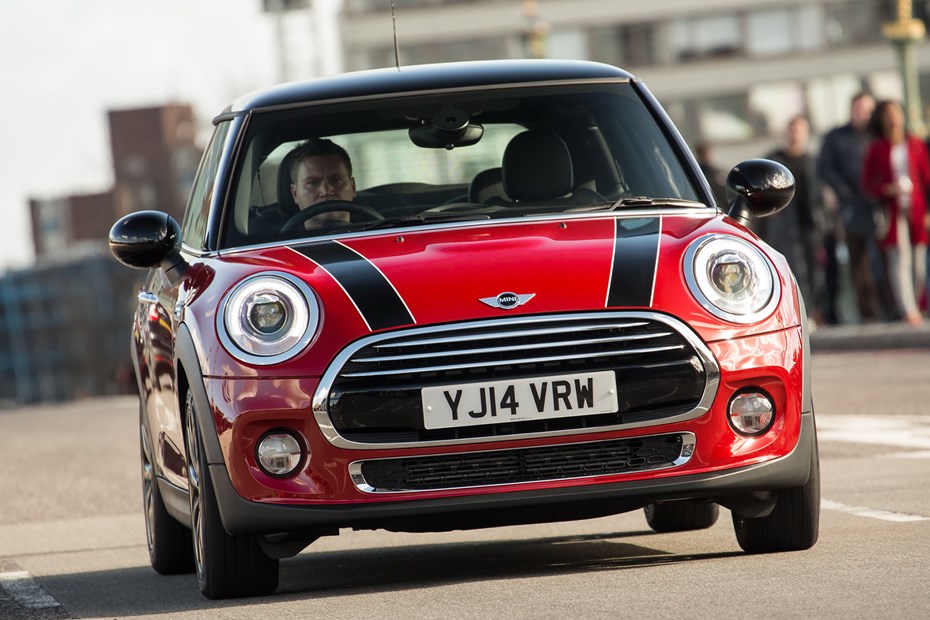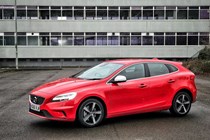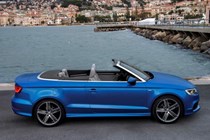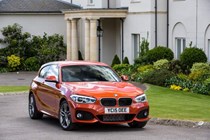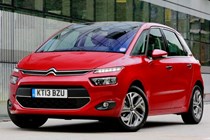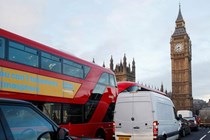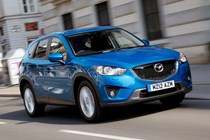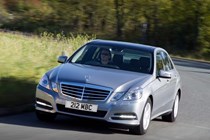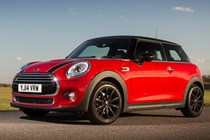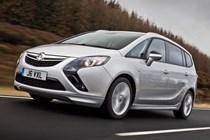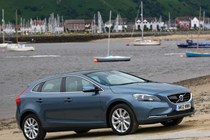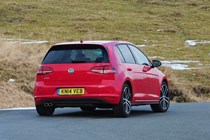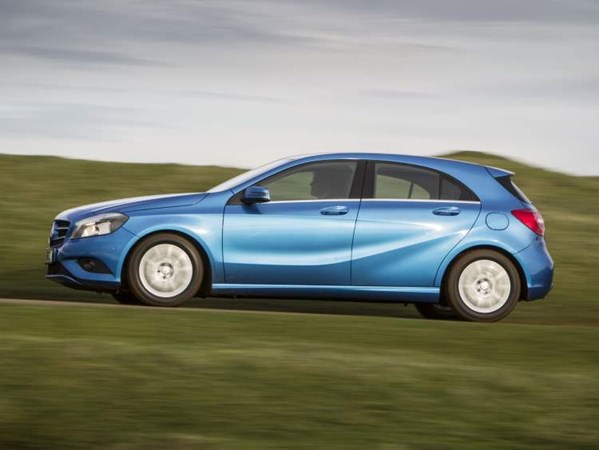Since April 2019, older diesel cars have been charged to enter London’s Ultra Low Emissions Zone (ULEZ). By August 2023, the ULEZ was extended to cover all of the capital’s 32 boroughs, the City of London, but excluding the M25.
Unlike the congestion charge, which applies to a certain section of Inner London, the ULEZ is in operation 24 hours a day, seven days a week, all year round, apart from Christmas Day. This saw many diesel fans – those who like the easy, torquey drive and the impressive fuel economy – scramble to find cars that wouldn’t fall foul of the scheme.
The ULEZ has always been based on emissions standards, rather than vehicle age. First devised by the European Union in 1992, Euro exhaust ‘classes’ have steadily reduced the amount of harmful gases new cars can emit. With that in mind, we’ve picked 10 excellent used diesels that are ULEZ compliant, and won’t break the bank, while keeping it clean in the city.
Best used ULEZ-compliant diesel cars for less than £10,000
GTI style, diesel efficiency
To find out more, read the Volkswagen Golf Mk7 review for a deep dive buying guide
Pros
- Spacious and high-quality interior
- Large number available for sale
- Strong GTD performance
Cons
- More expensive than direct rivals
- Watch out for clocked and modified examples
Stylish city car – available in 1,001 varieties
To find out more, read the MINI (F56) review for a deep dive buying guide
Pros
- All models are great fun to drive
- Lots of tech and a high-quality cabin
- Diesel engine impressive for mpg
Cons
- Boot and rear seat space is cramped
- Ride firm especially on larger wheels
Hard to find, but worth it
To find out more, read the BMW 1 Series review
Pros
- Superb diesel economy
- Impressive material quality
- Lovely steering
Cons
- Cramped, especially in the rear
- Luggage capacity not the greatest
Economical seven-seater that's surprisingly comfortable to drive
To find out more, read the Vauxhall Zafira Tourer review
Pros
- Seats seven in comfort
- Flexible and practical
- Decent quality and feel
Cons
- Rivals offer better handling
- Poor sat nav system
Roomy, soft-riding cheap-to-run family car
To find out more, read the Citroen Picasso review
Pros
- Practical
- Economical
- Good to drive
Cons
- Fiddly digital control interface
- Sparse entry-level model
Stylish convertible, low running costs
To find out more, read the Audi A3 Cabriolet review
Pros
- Glamorous looks
- Easy to drive
- Very efficient
Cons
- Roof reduces boot room
- Not very exciting
Compact luxury that buyers absolutely love
To find out more, read the Mercedes-Benz A-Class review for a deep dive buying guide
Pros
- Rakish, sporty styling
- Low-emission diesel is highly economical
- Brisk performance
Cons
- Not that exciting to drive
- Servicing is expensive
Reliability with all-wheel drive versatility
To find out more, read the Mazda CX-5 review
Pros
- Excellent performance
- Comfortable suspension
- Economical
Cons
- Interior doesn't feel quite as premium as some competitors
- Slow automatic gearbox
Stealthy hot-hatch with great economy
To find out more, read the Volvo V40 review
Pros
- Exceptionally comfortable seats
- Good refinement levels
- Lots of standard safety equipment
Cons
- Cramped interior space
- Cluttered, button-heavy centre console
Perfect London luxury
To find out more, read the Mercedes-Benz E-Class review
Pros
- Exceptional refinement
- Solid feel and roomy
- Excellent on the motorway
Cons
- Slightly noisy four-cylinder diesel
- Some reliability issues
How ULEZ affects older diesel cars
Transport for London decided on the Euro 6 standard for diesel, made mandatory from 2015, but actually implemented as early as 2012. Some car makers were building cars that met Euro 6 up to three years before it became law; by using a ULEZ checker, you can make sure the car you’re considering won’t be charged.
A ULEZ check on its number plate will tell you whether the car is compliant. It’s not an exact science, as manufacturers rarely published when their cars became Euro 6 compliant in this timeframe. Similarly, petrol cars must meet Euro 4, which became mandatory in 2006; earlier models may be compliant too. Euro 6 for vans applies from 2016: diesel commercial vehicles are the real target of this emissions reduction scheme.
And if it will, you can compare quotes for selling it here, before searching Parkers cars for sale for a suitable, ULEZ-friendly replacement.
FAQs
What about congestion charge discounts for Ultra-low emissions vehicles?
Discounts for vehicles purely based on emissions, called ULED (it stands for Ultra Low Emission Discount – it’s nothing to do with TVs), ended in April 2019, so many hybrids and all low-emission diesel or dual-fuel cars no longer qualify. Congestion Charge discounts and exemptions do exist, but these aren’t solely for ultra-low emissions vehicles; they instead exempt blue badge holders, recovery vehicles, motorbikes, sidecars, and mopeds, among others.
Which used diesels should I buy to drive in London?
Obviously any diesel car sold after September 2015 has to comply with Euro 6, but there are some older models that meet the standard and, better yet, they’re really rather good cars too.
As well as this list of modern cars, you could look to a classic with Classic Cars for Sale. Anything over 40 years old is exempt from ULEZ charges, provided that the DVLA has its tax class down as historic. You can confirm this on your log book (V5).
Why is the ULEZ so stringent for diesel cars?
In short, particulates and NOx emissions are the key here, and reducing them in the capital is paramount. CO2 is just one of the pollutants escaping from our exhaust pipes, and it’s a relatively known quantity; we emit a fair amount of it ourselves. Diesel cars produce some additional, rather unpleasant toxins which, in high concentrations, can have a measurable detrimental effect on health and even buildings.
A lot of damage has been done – much like lead in fuel before we transitioned to unleaded and then catalytic convertors to clean up pollution from petrol cars – but Euro 6 introduced additional measures to filter and neutralise those toxic emissions.
This is unrelated to the emissions-cheating scandal, which sought to reduce CO2 ratings for favourable regional taxation, buyer perception and lower average emissions; in fact, many manufacturers implicated in those scandals make clean, economical and efficient Euro 6 diesels. The truth is that for a long-distance driver sticking to speed limits, a well-maintained diesel car will use far less fuel in the first place. In cities, though, idling, congestion and short journeys keep diesel cars in their dirtiest operating states.
Just so you know, we may receive a commission or other compensation from the links on this website - read why you should trust us.


